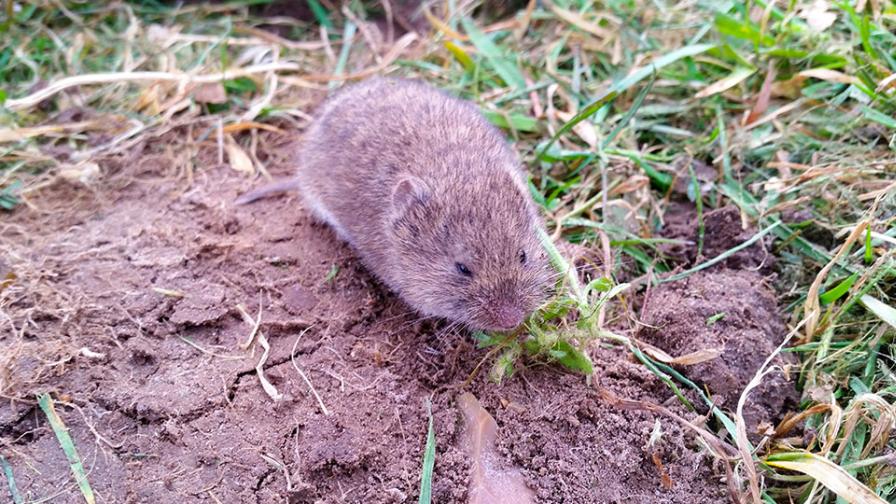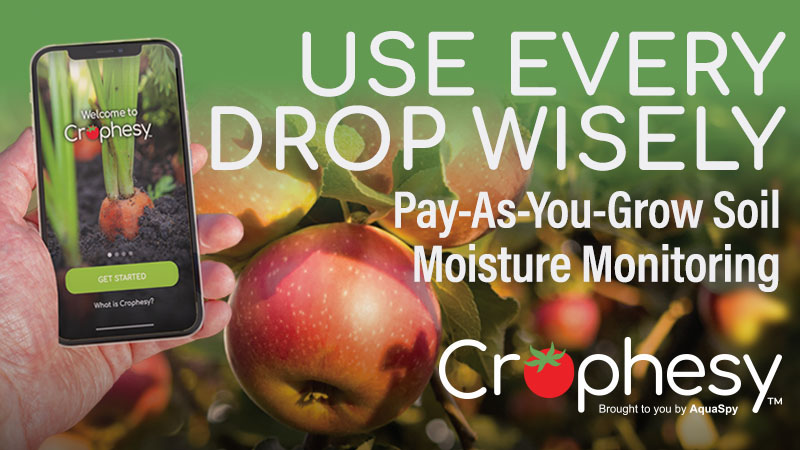Got Voles Invading Your Nut Orchards? This Solution Goes for the Gut

Growers may soon have approval to use a post-ingestive repellent to limit voles.
Nut growers seeking an effective option to chemical repellents in their fight against orchard rodents may get their wish in the next two years.
Anthraquinone, a post-ingestive repellent, has fared well in trials conducted by Roger Baldwin, a University of California, Davis Cooperative Extension Specialist in Human-Wildlife Conflict Resolution.
Initially developed as a repellent to birds, the product sickens rodents upon consumption, to the point in which they learn to avoid it in the future.
In lab testing with voles, anthraquinone resulted in 84% repellency. That success led Baldwin to wonder if growers could potentially employ the strategy to reduce vole damage on their tree and vine crops.
“Voles don’t climb very well, but they like to girdle newly planted trees and vines,” Baldwin says. “So, if we could apply anthraquinone to the bottom
8 to 12 inches of newly planted trees or vines, then that could potentially protect those trees or vines from that kind of girdling damage.”
Baldwin designed a study in which anthraquinone was applied in the spring and summer to correspond with cool/wet and hot/dry seasons. He found a 10- to 20-fold reduction in girdling damage for trees that were treated with anthraquinone vs. those not treated.
“This was really exciting news,” he says. “We think that anthraquinone has real potential as a repellent for vole girdling damage moving forward.”
The product is currently in the process of being registered.
“Keep your eye out for it,” Baldwin says. “Our hope is that within the next year or two maybe it will be available on the market.”
If approved, anthraquinone would serve as an effective alternative to chemical repellents. Such repellents usually rely on objectionable odors, unpleasant tastes, something that might elicit a fear response, such as predator urines, or maybe a pain response, such as capsaicin.
“All of these are different kinds of repellents that have been used for a variety of wildlife species,” Baldwin says. “But they generally have not worked very well for rodents.”
OTHER VERTEBRATE CONTROLS
Baldwin, speaking at a webinar hosted by the UC Statewide Integrated Pest Management Program (UC IPM), offered several tips on how to control voles, mice, and rats:
Exclusion: Tree or trunk protectors, usually made from hard plastic, are used to prevent voles from damaging newly planted trees and vines. However, if growers are going to utilize these protectors, they need to bury them 4 to 6 inches below ground.
“If you just place them on the top of the surface of the soil, you can actually create a more ideal environment for voles,” Baldwin says. “They can basically just crawl underneath that and up inside the structure, and now they have food
and cover, which creates an ideal situation for them.”
Biocontrol: Smaller studies of barn owls indicate their presence in fields can result in somewhat reduced gopher densities, but there is not much data to show similar success against voles, mice, and rats, particularly in California. This is due to voles, mice, and rats being able to produce numerous litters per year.
“If you’re dealing with a high-density population, likely you’re going to need other tools to reduce those numbers in a particular area, and then maybe barn owls might be able to maintain them at a relatively low density for an extended period of time,” Baldwin says. “At a minimum, it doesn’t hurt to have barn owl boxes up on the landscape. It’s great to have that natural predation.”
Habitat Modification: Brush and pruning piles should be removed, Baldwin says, as they provide ideal harborage for rodent species, particularly roof rats. Flood irrigation — while challenging in California because of the lack of water resources — is still used on occasion to control vertebrate pests, primarily voles but also gophers. Flooding a field forces rodents to rise to the surface, where they fall victim to myriad predatory species.
Trapping: Growers who utilize live traps for root rats are responsible for euthanizing the animals after capture.
“Sometimes people think that they can take live-trapped animals somewhere else and release them, but you cannot. That is against California Fish and Game code,” Baldwin says. “You have to be prepared to euthanize the animal after capture.” That technique typically involves the use of a carbon dioxide euthanasia chamber. Of note, drowning is no longer considered a humane form of euthanasia, Baldwin says, and more importantly in California is illegal.










